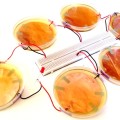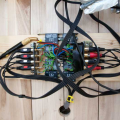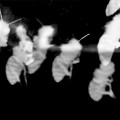This page gives an overview of the 10 most recents posts contributed to all different sections of the research category at large. For a complete overview of a specific topic within research, as bee monitoring, intelligent beehives, urban corridors or other topics: please click on the appropriate label in the submenu.

This work is licensed under a Creative Commons Attribution-NonCommercial-NoDerivatives 4.0 International License.
The story behind the concept
The project ‘Guerilla Beehives’can have an exemplary meaning for the audience if it comes to the public perception sustainability. It is a collaboration between the arts, design and science.
This is the end of the anthropocene. We imagine an ecosystem where all actors collaborate to keep up the resilience of the system. As artists, gardeners, makers and thinkers, we collaborate with animals, plants, insects and bacteria. …
(read more…)
For many years now, I have been creating experimental set-ups using sustainable beehives that have been augmented with camera’s, microphones, sensors and sensory processing algorithms to analyse the state of the colony, the quality of pollen and the behavior of the bees. These “Intelligent Beehives” are progressively linked in a European- wide network and the data is being made available online.
…
(read more…)
We have been developing a monitoring device that is based upon the continuous monitoring of the colony’s buzz: a non-intrusive scanning device for controlling the colony’s health & development. We also have been adding video monitoring (outside and inside), which gives us a full spectrum of possibilities for colony monitoring and environmental surveillance.
As bio indicators, honeybees provide us with a constant stream of information on the environment (urban, countryside) on which they forage (activity, pollen, nectar). Diseases like colony collapse disorder and environmental problems like the use of pesticides could be analysed in a different way by monitoring and analysing the daily …
(read more…)
Vincent was preparing the audio for the sound beehive: 4 electrets microphones and 4 piezo microphones with preamps mounted in the rooftop of the Warré beehive. We’ve put the charger for the preamps a couple of meters away from the hive, to avoid all EMF and to be as less intrusive as possible.
Our initial intention is to install the Asus computer (with debian) and a Mackie mixing panel. Later we decide to swap that setup for a more performative one: an 8 channel Prosonus soundcard, the Asus with Debian for recording and sending the files over the network to a NAS (network attached storage) hard disk.
We will record 4 times 3 minutes an hour, every :00, :15, :30 and :45. The 8-channel …
(read more…)
I decide to do another bee-sound-experiment. The fist one I did was in 2012 with the Transparent Beehive. Then, the focus was on exhibiting in realtime the sound of the colony. During talks and presentations I was making observations and linking them to the amplified sounds made by the bees.
This time I want to do it differently. I will record at regular intervals the hum of the colony and analyse it thoroughly afterwards. I also want to link the sounds with the environmental sensor data (temp, humidity, solar radiation) in the surroundings of the apiary, with the sensor data inside the beehive (temperature, humidity and vibration of the comb) as well with video images in- and outside the …
(read more…)
Ethology is the scientific and objective study of animal behaviour, and is a sub-topic of zoology. The focus of ethology is on animal behaviour under natural conditions, as opposed to behaviourism, which focuses on behavioural response studies in a laboratory setting.
Many naturalists have studied aspects of animal behaviour throughout history. The modern discipline of ethology is generally considered to have begun during the 1930s with the work of Dutch biologist Nikolaas Tinbergen and by Austrian biologists Konrad Lorenz and Karl von Frisch, joint winners of the 1973 Nobel Prize in Physiology or Medicine. Ethology is a combination of laboratory and field science, with a strong relation to …
(read more…)
Further development: a bio degradable organic hive design and biosensors powered by sustainable energy to develop a beehive that is at the one hand a sensor of the environment (pollution, nectar, pollen analyses) and at the other hand a non-intrusive bee monitoring system (in times of Colony Collapse Disorder). …
(read more…)
Growing intelligent beehives is a long term project, from mycelium and recycled waste straight into the final guerilla beehive shape. The purpose is to populate Brussels city with a network of intelligent guerilla beehives. These are beehives that offer shelter to a bee colony ‘in the wild’ – bee populations that are not domesticated but that are monitored from a distance in a non-intrusive way while they are collecting information about the urban environment.
The system is set up as a fully organic, cradle to cradle, circle. …
(read more…)
More and more people are living in the cities. We have to search for new modes of sustainable living, new ways of food production. Re-examine the link between the city as consumer and the countryside as provider. In this context, we are researching how to make a network of intensively cultivated city rooftopgardens where we can grow our own food for the neighbourhood.
Besides the food-function, the UrbanArtFarm is set up as our open air laboratorium. In this project, …
(read more…)
Ecological corridors rely partly on methods of urban agriculture, guerilla gardening, ecological management and social anthropology. Corridors can also make good use of avant-garde technologies, so that such projects become experiments on the edges of art, science and technology: Embedded systems, novel sensors, low energy computing and sensor networks are useful for monitoring soil quality, plant growth processes, animal activity, pollution and the movement and interaction of people within the local environment. …
(read more…)










